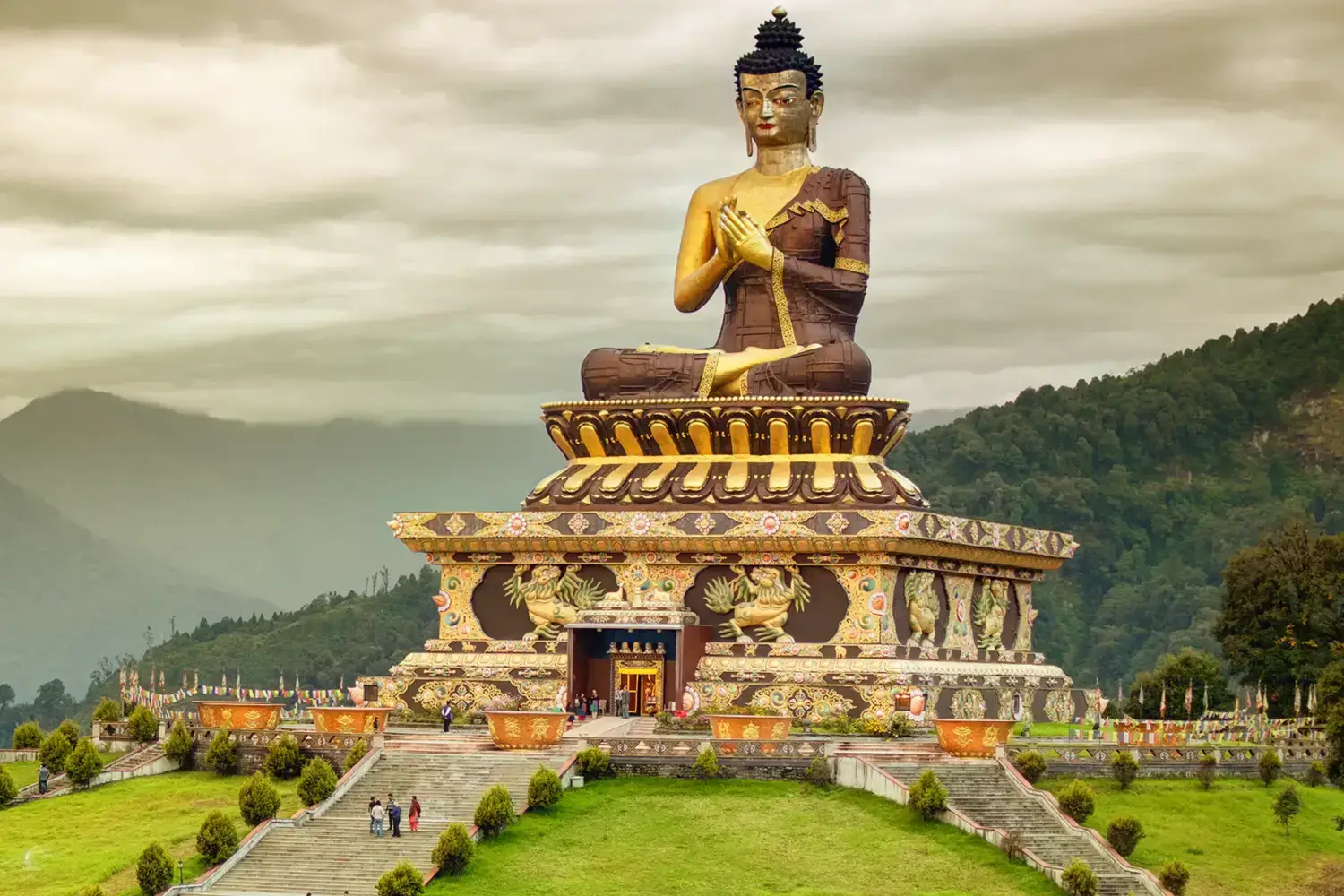 Sikkim Tours Online
Sikkim Tours Online
 Sikkim Tours Online
Sikkim Tours Online

Heritage Tourism in Sikkim
Sikkim’s heritage is a rich tapestry woven from its diverse cultures, traditions, and religious practices. Its unique history is reflected in its sacred sites, vibrant festivals, and traditional art forms, which continue to thrive and shape the state’s identity.
Buddhism plays an important role in Sikkim’s spiritual heritage and can be seen in all the monasteries in the state. Among the most revered is the 17th-century Rumtek Monastery, one of Tibetan Buddhism’s most important centers. The Pemayangtse Monastery, near Pelling, is another religious site that showcases intricate woodwork and murals. Tashiding Monastery, believed to cleanse the soul with its sacred waters, holds special religious significance for Buddhists. These monasteries also preserve various religious artifacts, ancient scriptures, and Thangka paintings that reflect Sikkim’s rich heritage.
The indigenous Lepcha, Bhutia, and Nepali communities have greatly contributed to Sikkim’s cultural heritage. Their traditional music, dances, and costumes are showcased during vibrant festivals like Losar (Tibetan New Year), Losoong (Sikkimese New Year), and Saga Dawa, a celebration of Lord Buddha’s life.
The architectural heritage of Sikkim is evident in its royal and religious structures. The Palace of the Chogyals in Gangtok is a symbol of the Namgyal dynasty’s historical reign. Additionally, Sikkim’s diverse cuisine, characterized by delicacies like momos and gundruk, highlights the blend of cultural influences.
Sikkim’s natural heritage is equally notable, with sacred lakes like Tsomgo Lake and Khecheopalri Lake considered holy by locals. Together, Sikkim’s spiritual, cultural, and natural legacies form a heritage that is deeply revered by its people and cherished by tourists worldwide.

Dubdi Monastery: Also known as Yuksom Monastery, this is believed to be the first and the oldest monastery in Sikkim. Built in either 1642 or 1701, this monastery played a major role in the establishment of the Namgyal Dynasty.
Rabdentse Ruins: Acted as the second capital from 1670 to 1814 of old Sikkim but later it got destroyed by the Gurkha Army and turned into a ruin. These ruins near Pelling are now a viewpoint for catching breathtaking views of Mt. Kanchenjunga.
Pemayangtse Monastery: One of the oldest and prestigious monasteries in Sikkim that was founded in the 17th century by Lhatsun Chempo. The monastery is situated near Gyalshing city, and is surrounded by hills, farmlands and the Himalayas. This monastery now holds various ancient wooden sculptors, paintings and scriptures depicting spiritual and historical significance of the place.
Other Heritage Sites in Sikkim:
Here are quick links to explore the Sikkim Tours Online website and find important information about Sikkim travel, tourism, and holiday packages.